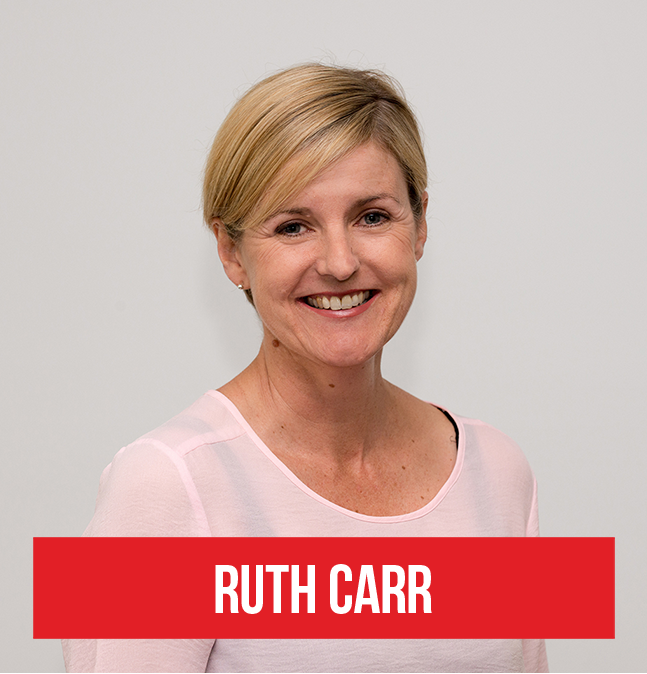A study of curriculums for major year 11 and 12 science subjects has found only three Australian states mention the work of a female scientist – and she was from the United Kingdom.
The study’s findings reveal that female scientists are less likely to feature in senior high school lessons, despite millions of taxpayer dollars spent on initiatives to engage more young women with the potential of STEM careers.
The new research examined teaching material for the four main science subjects – biology, chemistry, environmental science, and physics – studied in years 11 and 12 within the Australian Curriculum.
The Nothern Territory, Queensland, and South Australia all refer to a lone female scientist – the British chemist Rosalind Franklin, whose work is at the heart of understanding the molecular structures of DNA. In other states and the Australian Capital Territory, only contributions by male scientists were mentioned.
The national study that investigated a lack of female representation promoted to high school STEM students was led by researcher Dr Kat Ross and published in the Australian Journal of Education. She became aware of the issue when she realised Marie Curie – the dual-Nobel Prize winner and pioneer of radioactivity research – had been omitted from the New South Wales physics syllabus.
Dr Ross said that, without already overworked teachers personally adapting lessons to include examples of female scientists, most secondary school science courses in Australia would have no women in STEM role models.
“Year 11 and year 12 is such a critical stage for students to be thinking about what careers they’re pursuing,” she said.
“And for women, you’re essentially telling them if they want to pursue science … there’s no future for them because there’s no recognition or acceptance that women are even a part of science.”
The research was undertaken by teams from the Australian National University (ANU), the Australian Wildlife Conservatory, Curtin University, Edith Cowan University, Monash University and the University of Southern Queensland.
Female scientists should be celebrated
With more than $100 million spent by Australian governments in the past decade to lift female participation in science, technology, engineering and mathematics (STEM), it’s clear more still needs to be done to address the lack of female representation shown in science subjects, as well as what Director, CSIRO Education and Outreach, Ruth Carr, describes as “the bias and certain misconceptions and stereotypes about what STEM is or its relevance”.
“There are currently numerous issues and barriers in STEM impacting its uptake,” Ms Carr told EducationDaily. “This is particularly problematic because it occurs at a pivotal stage where students are shaping their career aspirations.”
It is extremely important, says Ms Carr, “for us to address these challenges”.
“We are doing this by making STEM accessible, relatable and inclusive to students through mentorships, showcasing diverse STEM role models, and providing hands-on, engaging experiences.”
Read more: Primary + STEM – helping girls see it so they can be it
Across CSIRO Education and Outreach, 67 per cent of students and 72 per cent of teachers involved in STEM Together identify as female. The national five-year program is delivered by CSIRO in partnership with the BHP Foundation and aims to increase inclusion and participation of under-represented, high-potential students in STEM.
More importantly, says Ms Carr, STEM Together has been designed not for the students at the top of the class, but for those that could develop an interest in STEM if given the right opportunity.
“For instance, our Generation STEM initiative connects students with local STEM industries and professionals through activities such as site visits, internships, camps, and mentorships,” Ms Carr told EducationDaily.

Generation STEM’s 2019-2022 evaluation report highlights that female students showed more interest in learning about STEM and gained a better understanding of the career opportunities available after participating in the initiative.
Another CSIRO-led initiative aimed at boosting interest in STEM pathways is the Young Indigenous Women’s STEM Academy – a national program for young Aboriginal and/or Torres Strait Islander women. The program offers tailored support and mentoring for students from when they join in year eight until the end of their tertiary pathway. The Academy is part of the movement to increase the representation of women in STEM careers, especially for those living in regional and remote communities who may experience greater barriers to participation.
This 10-year program has recently reached its mid-way milestone, with the first cohort of year eight young women now completing year 12, with a 96 per cent school retention rate that exceeds the national average. The national retention rate for Indigenous female students in these years is 63 per cent (Australian Institute of Health and Welfare, 2023). These young women are guided and mentored by predominantly female (84 per cent) teachers.
STEM Professionals in Schools partners teachers with STEM professionals to bring contemporary industry skills into classrooms across Australia, where 41 percent of STEM professional volunteers identify as female – a figure well above the 27 per cent national average of women in STEM industries (STEM Equity Monitor, 2022).
Currently, 67 per cent of the Undergraduate Research Opportunities Program (UROP) students identify as female. This program facilitates undergraduate student job placements in biomedical research including basic biochemistry, molecular biology, cell biology, physiology, bioengineering and bioinformatics.
With STEM, you can pursue diverse pathways
This is also, says Ms Carr, why they launched #WithSTEMYouCan.
“The campaign seeks to inform young people about the diverse range of STEM professionals and careers. We are trying to show students that STEM can apply to arts, sports, and music as well as science, technology, engineering, and maths,” Ms Carr told EducationDaily
By showing students the possibilities that are available to them, an ideal STEM education, she says, “empowers all students by offering them opportunities and enhancing their capabilities”.
And when it comes to female Australian scientists who deserve to be highlighted within high school science teaching, Ms Carr says many have made substantial contributions to various fields.
“From CSIRO’s Ruby Payne-Scott’s pioneering work in radio astronomy to Fiona Wood’s advancements in burns treatment, these women have shattered barriers and achieved remarkable milestones,” Ms Carr told EducationDaily. “There’s also Elizabeth Blackburn, a Tasmanian scientist who secured the Nobel Prize in 2009 for her work on telomeres, aging, and cancer. Corey Tutt has also profiled First Nations’ STEM leaders in his recent publication, First Scientists, which includes Australia’s first Aboriginal astrophysicist Karlie Noon.”
What’s important to remember, Ms Carr says, is that “science thrives on collaboration, with countless women contributing significantly to major breakthroughs”.
While figures like Ms Payne-Scott, Ms Wood, Ms Noon and Ms Blackburn shine, Ms Carr says it’s vital to note that scientific achievements are often the results of collective teamwork, underscoring the vital role of women in scientific domains.
“Including these women’s achievements in the Australian Curriculum is crucial because it not only acknowledges their significant contributions but also provides role models for students,” she told EducationDaily.
“By highlighting the stories of these Australian women, we can inspire the next generation to pursue STEM careers with the understanding that STEM is open to everyone.”








